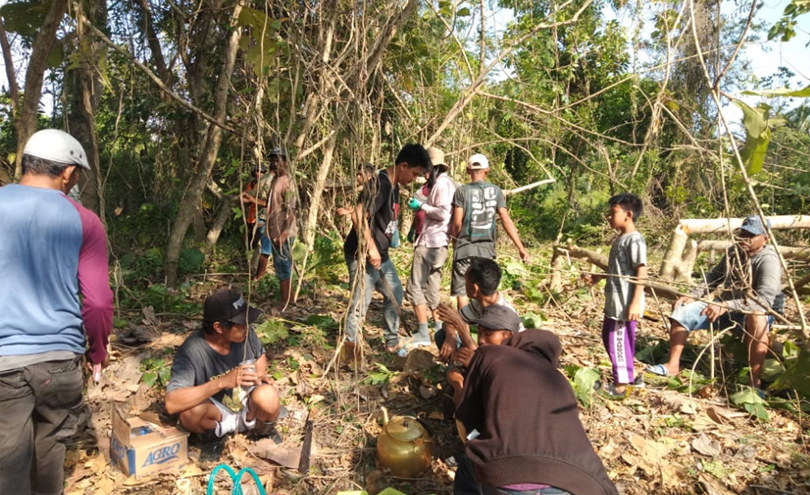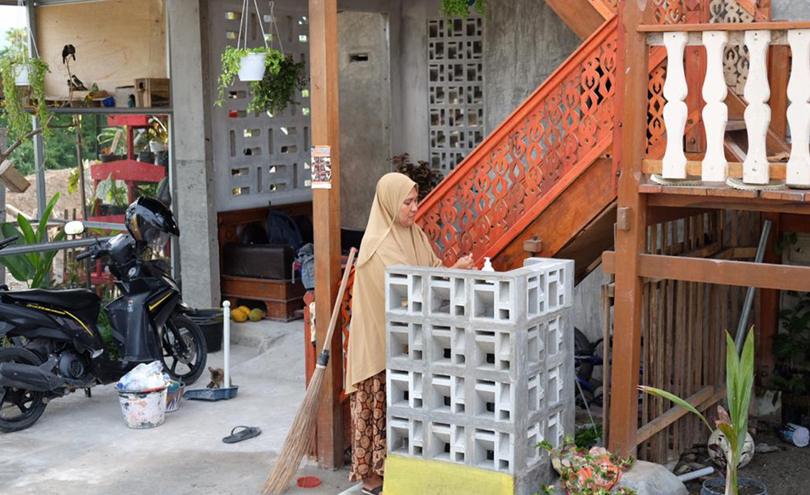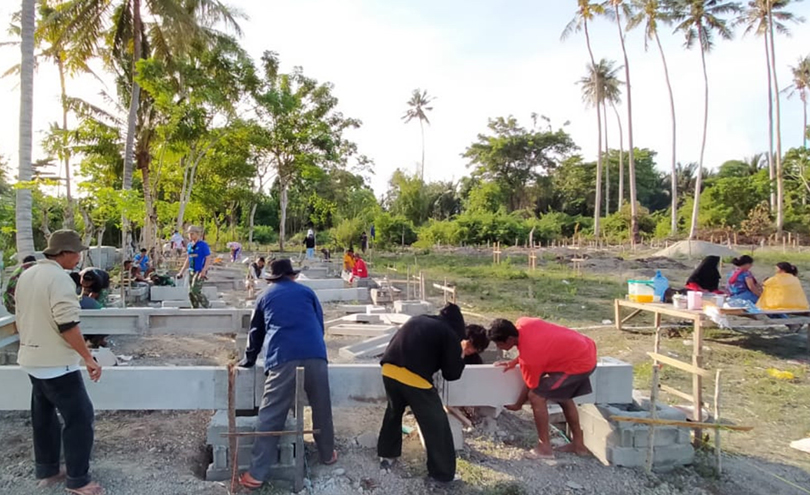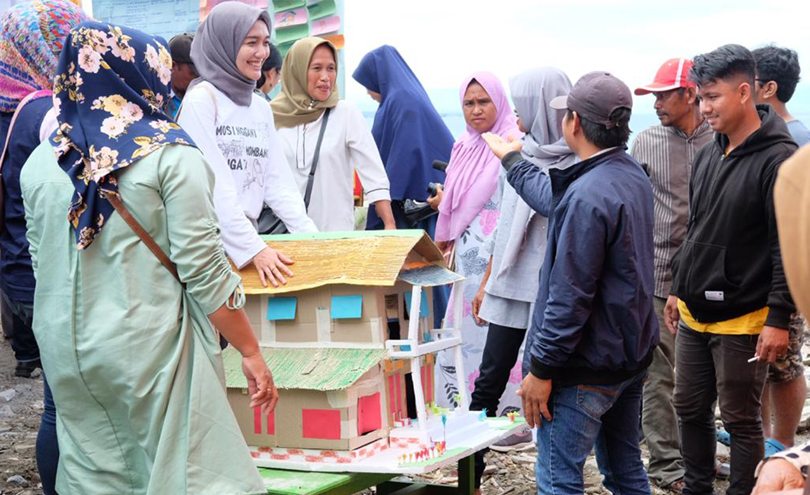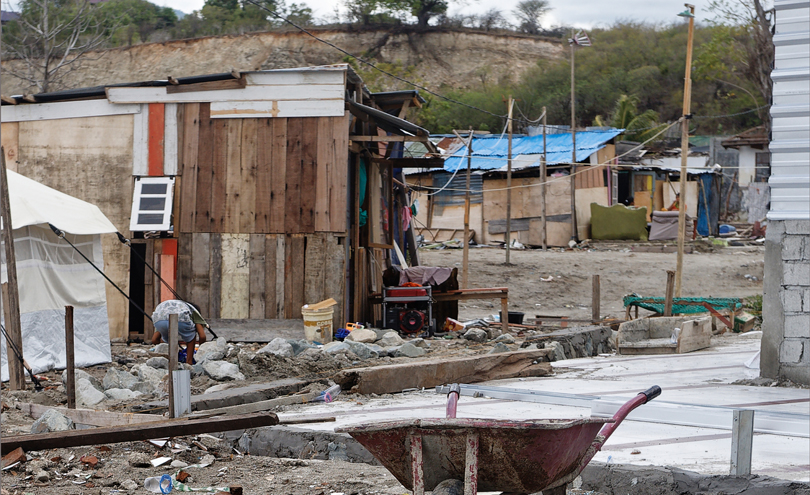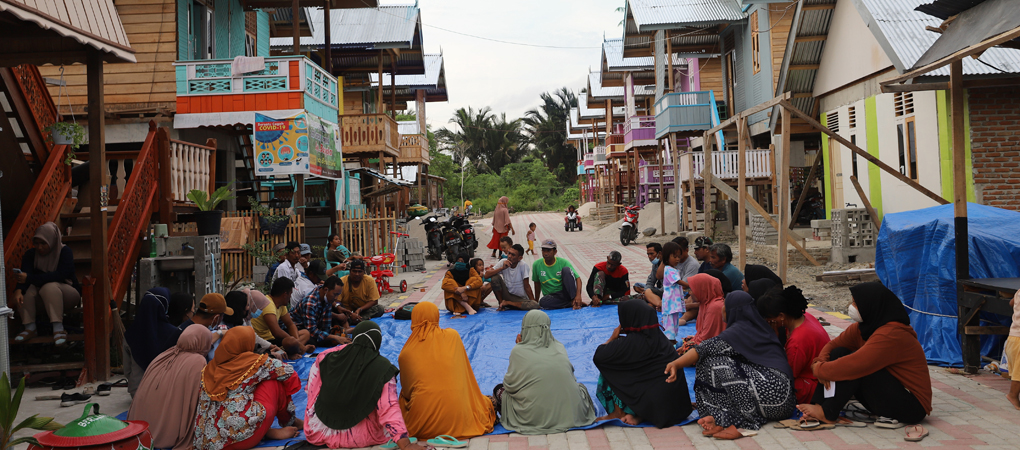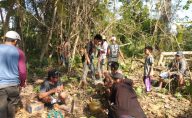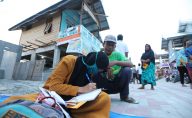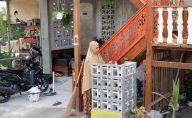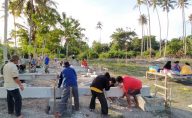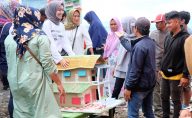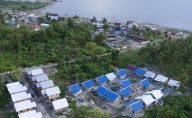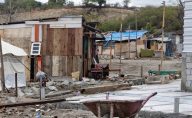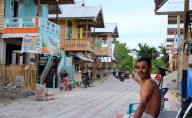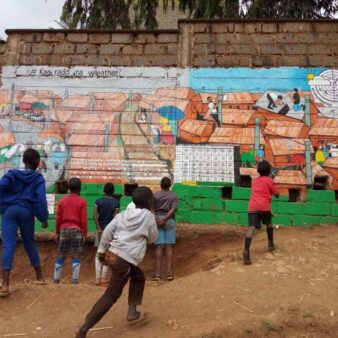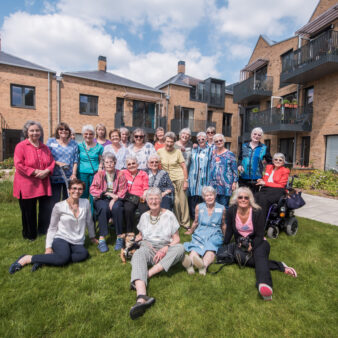More than 19 million people live under threat of earthquakes and tsunamis on the eastern Indonesian island of Sulawesi. In the past century, the island has experienced more than 15 earthquakes measuring over 6.5. In September 2018, a 7.5 magnitude earthquake in Central Sulawesi triggered a tsunami in Palu Bay, on the northern coast of the island. More than 4,000 people were killed and thousands of homes were damaged or destroyed.
The devastation experienced by Palu Bay’s coastal communities prompted the Indonesian government to create a relocation policy for settlements in the disaster red zone, including Mamboro Barat Village. These communities were located less than 100 metres from the highest tide point and considered to be most at risk from future tsunamis. The relocation site, however, was 5km from the coastline and the majority of residents in Mamboro Barat did not want to move so far from the sea. As members of the Bugis ethnic group, they have a strong tradition of being coastal people and most families earn their living from fishing.
Working with local non-governmental organisation (NGO) Arkom Indonesia, the community rejected the government’s proposal, opting instead to develop a plan for a collective relocation closer to the sea. Construction of 38 homes, housing 156 people, was completed in December 2020 at a new site in Palu Bay, called Kampung Mamboro Perikanan.
The village is part of Arkom’s Building Homes Collectively for Better Habitat project, and is one of several post-disaster projects in Central Sulawesi run by the organisation. Arkom introduced a people-driven approach to reconstruction after the catastrophic 2004 ‘Boxing Day’ tsunami, which killed an estimated 230,000 people across 14 countries surrounding the Indian Ocean.
The project in practice
Arkom’s role in the project was to support the community to develop and implement a collective relocation plan which met the needs of survivors, as an alternative to the government’s top-down approach. The long-term goal is to achieve the financial independence of the community through working and savings groups.
When the project began, survivors of the tsunami were living in inadequate temporary shelters built by the government on the beach. They considered the choices of either remaining in the disaster red zone, or moving to an alternative location in the safe zone which was close enough to the sea for the community to continue fishing and long-term livelihoods.
All households were required to take part in a participatory mapping and planning process and a mapping team – made up of men, women, young and elderly people – was formed. A new location was identified outside the red zone and the community’s plans were presented to local government representatives, who accepted their proposal. It was then processed into a more detailed technical planning document and submitted to the government for approval of the development process.
The location of the new village is 280 metres from the tideline and more than 15 metres above sea level. The land was purchased by the community using a collective savings fund, with starting capital provided by Arkom. The land was registered under the name of the Arkom Indonesia Foundation. Each family will make affordable monthly repayments of IDR 300,000 ($21 USD) for five years, which will be retained in a joint bank account on behalf of the community. This will become a Community Development Fund (CDF) to be used for long-term educational, economic and housing needs, including social welfare. After all families have finished repaying into the fund, it was agreed they will receive individual ownership certificates. However, Arkom is encouraging the community to adopt collective ownership instead.
All households were required to participate in workshops to learn about the technical rules of planning and site boundaries, etc. The results of these sessions determined the size of the housing plots, road widths and the location of drainage systems. The community also agreed to create a community hall and a playground in the centre of the site.
To mitigate the risk of future disasters, the homes were constructed using earthquake-resistant building technology by pre-fabricated concrete panels. The community is planting and maintaining mangroves along the coast to create a breakwater barrier. This will reduce the risk of being hit directly by a large tsunami wave and will provide valuable extra time for evacuation. Furthermore, mangroves also help increase the fish population, improving the source of income for the community.
The community collaborated with Arkom in the design process, which resulted in two options: a house built directly on the land, and one built on stilts. Twenty-nine families chose the landed house – using the prefabricated concrete panel structure – as it is more accessible to older family members. The remaining 10 families chose the stilt house, which was inspired by drawings from survivors when asked what they imagined their house to be like.
Arkom liaised between the community and other stakeholders (various government agencies and funders) and helped the community manage funding allocated from the government for housing reconstruction. An agreement was signed with central government, under which the Research and Development Centre of the Ministry of Public Works and Housing (PUPR) took on responsibility for providing experts for the production of the prefabricated concrete panels and training into household level to install the 138 pcs panel become the frame structure of the house. Twenty-one men – who are all survivors – received certification in the production and assembly of the panels and went on to work with a further 30 men and five women in the construction process.
Funding
The total cost of the Kampung Mamboro Perikanan project was approximately IDR 8.4 billion ($586,516 USD). The Air Asia Foundation contributed IDR 5 billion ($349,066 USD), which paid for the land at a cost of IDR 531 million ($37,076 USD), the construction of the 10 stilt houses (IDR 60 million ($4,189 USD) per house), community training and workshops, skills certification and advocacy campaigns.
Palu City government funded the construction of 24 landed houses and the remaining five were funded by PUPR at a cost of IDR 50 million ($3,491 USD) per house.
The Sheep Indonesia Foundation financially supported the implementation of a clean water supply and communal sanitation system in the village, as well as some bathrooms within homes at a cost of IDR 300 million ($20,947 USD).
PUPR, as part of the Cities Without Slums programme, contributed IDR 1.7 billion ($118,700 USD) to the construction of roads and drainage systems. The state electricity company (PLN) provided affordable electricity to each house and street lighting. Affordability is ensured with special tariffs and subsidies granted by PLN and the government in recognition of the success of the community in the relocation process.
Impact
By prioritising the economic and socio-cultural impact of the relocation – compared to the government option, which focused only on the number of houses needed – the project has accelerated the economic recovery of a community whose livelihoods depend on the sea.
Kampung Mamboro Perikanan’s residents are the only tsunami survivor group to have been able to return to fishing. Some residents produce bricks and take part in workshops, learning to construct frames and doors which match the requirements of earthquake resistant homes. More than 20 people have been employed by the local government, installing concrete panels on houses and school buildings. Further financial resilience is being built through collective savings, which are in the process of being formalised into a co-operative.
The process of rebuilding has increased self-confidence, strengthened social cohesion and built solidarity in a community traumatised by the tsunami. Evacuation planning and the earthquake-resistant design of the new homes have improved disaster preparedness and safety. So far, the new houses have withstood shocks below 5.
Residents gained project management and construction skills, enabling them to maintain their homes in future, while women’s involvement in every aspect of the project challenged local preconceptions around gender roles.
Expansion and transfer
Elements of the project are being implemented in other villages, assisted by Arkom Indonesia, ranging from collective community relocation and individual household relocation to on-site reconstruction.
Workshops on disaster-mitigation planning and the manufacturing and installation of the prefabricated concrete panels have helped transfer knowledge between villages. A live radio talk-show gave representatives from Kampung Mamboro Perikanan the opportunity to share the process their community has been through with a wider audience.
Arkom Indonesia plans to carry out a ‘community exchange’, where assisted communities will be able to share their experiences with other communities in Indonesia and internationally.
The success of the organisation’s community-led approach to post-disaster planning and reconstruction has prompted changes in policy at the Palu City government and surrounding region. Improved relocation options resulting from this official change in policy have the potential to benefit an additional 3,000 families in Donggala, Palu, and Sigi, who do not want to relocate to government-built housing on a site not pre-approved by the communities. Successful replication of the model is uncertain, however, because crucial economic and socio-cultural factors have not been fully integrated into PUPR’s approach.
This project has proven that communities can take the lead in their own recovery and make key decisions on where and how they want to reconstruct their lives. By collaborating with both Arkom and the government, the tsunami survivors have managed to build a new village in their preferred location and return to a traditional way of life with improved financial security and climate adaptation.
